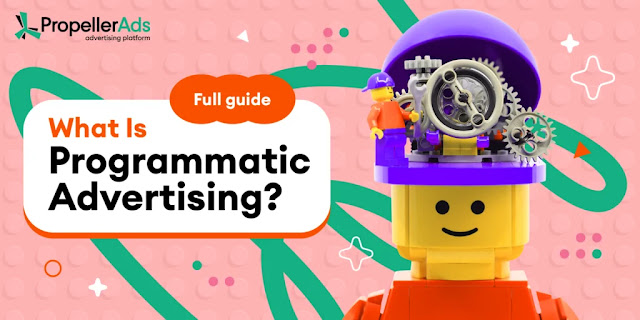In today’s digital marketing landscape, one of the most talked-about trends is programmatic advertising. But what is programmatic advertising exactly, and why has it become such a game-changer in the advertising world? Simply put, programmatic advertising refers to the automated process of buying and selling digital advertising space. Instead of relying on traditional methods where advertisers negotiate and manually purchase ad space, programmatic advertising uses technology to streamline this process, making it faster, more efficient, and highly targeted.

Programmatic advertising relies on data to help marketers reach their audience in the most precise way possible. By using real-time data such as browsing history, location, device type, and demographics, advertisers can target users with tailored messages at the right time. This level of targeting ensures that ads are shown to the most relevant audience, reducing wasted impressions and increasing the chances of engagement. The automation aspect of programmatic advertising also eliminates much of the guesswork involved in traditional ad buying, allowing marketers to optimize their campaigns quickly and effectively.
One of the key benefits of programmatic advertising is its ability to scale. Whether an advertiser wants to target a small niche or a massive global audience, programmatic advertising allows them to do so efficiently. It also enables the use of various ad formats, such as display ads, video ads, and mobile ads, across a wide range of platforms, including websites, social media, and apps. This flexibility makes programmatic advertising an attractive option for businesses of all sizes and industries.
The process of programmatic advertising works by using automated systems known as demand-side platforms (DSPs) and supply-side platforms (SSPs). A DSP allows advertisers to bid on ad inventory in real-time, while an SSP helps publishers sell their ad space. When a user visits a website or app, an auction occurs within milliseconds, where both DSPs and SSPs bid on the available ad space based on factors like the user's profile, location, and behavior. The highest bidder wins the auction, and the ad is served to the user instantly. This seamless transaction is what makes programmatic advertising so efficient and effective.
Another important aspect of programmatic advertising is its ability to optimize campaigns in real-time. Since the process is automated, marketers can monitor the performance of their ads continuously and make adjustments on the fly. Whether it’s tweaking targeting parameters, adjusting bids, or switching up creative assets, programmatic advertising allows for constant optimization, ensuring that campaigns are always running at their best.
However, programmatic advertising also comes with its challenges. One concern is ad fraud, as the automation of the process can sometimes lead to invalid traffic or misdirected ads. Advertisers need to take steps to safeguard their campaigns, such as working with trusted platforms and using fraud prevention tools. Additionally, privacy concerns have become more prominent with the increasing use of data in targeting. Advertisers must be mindful of regulations like GDPR and CCPA to ensure they are compliant with data protection laws.
In conclusion, programmatic advertising has revolutionized the way digital ads are bought and sold. By automating the process and leveraging data to target the right audience, it offers a more efficient and effective way to run ad campaigns. Whether you're a small business owner or a large enterprise, understanding what is programmatic advertising and how it works can help you make the most of your advertising budget and achieve better results.
Comments on “Understanding What is Programmatic Advertising”